Las Islas Bonitas
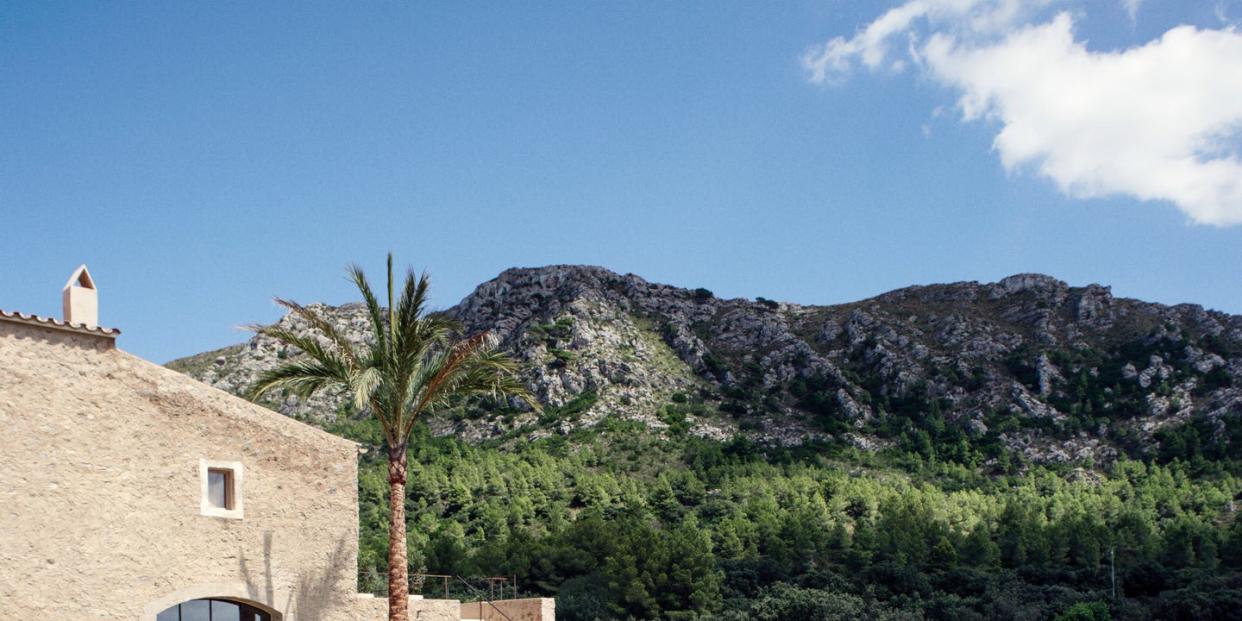
There is something intrinsically fascinating about archipelagos. You can visually track how the same idea or species evolved differently on individual islands. Plant the same seed on a string of neighboring islands and each of those seeds, under the right circumstances, might grow into something singularly rare and beautiful.
This can be true culturally as well: Although a host of Mediterranean islands have grown and used many of the same ingredients over centuries, each of them, from Sicily to Corsica to Corfu, boasts its own independent culinary history and unique dishes. This explains why the four major islands in Spain’s Balearics— Formentera, Ibiza, Mallorca, and Menorca—despite being so close to one another, are so compellingly different.
Dotted with Mediterranean pines and sandy beaches, Formentera was historically an agricultural island, known for its wheat, and was for some time besieged by pirates. Accessible only by boat, it’s become an isle of free spirits and a place where bohemian celebs like Kate Moss and Jade Jagger like to hide out.
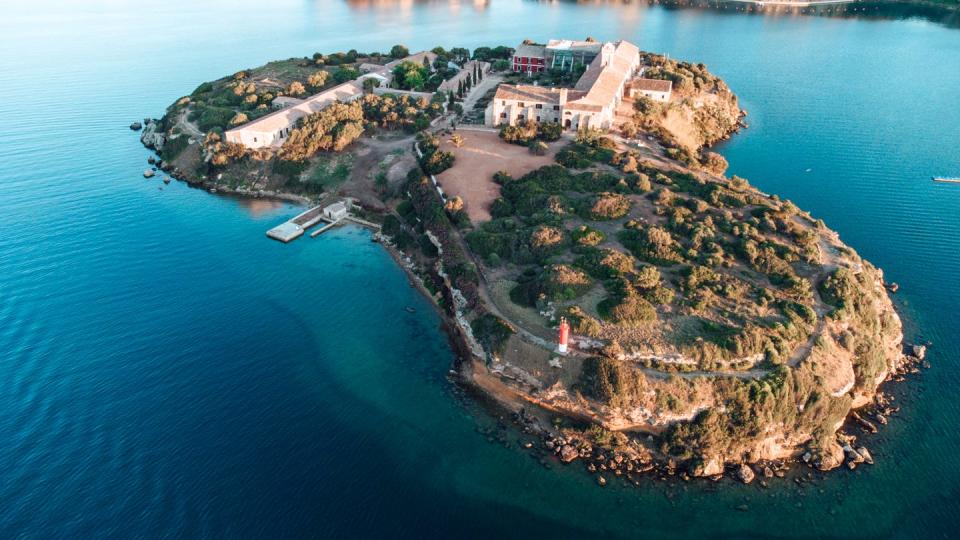
Ibiza, on the other hand, was, as far back as 2,500 years ago, an important commercial port, trading in salt, dyes, and fish sauce. In modern times, it evolved into a hedonistic party destination, home to some of Europe’s most famous clubs. These days, it’s the island’s secret coves and small hotels and restaurants, like La Granja and Atzaró, that are the preferred hangouts, while the island’s hippie markets are thriving with young artisans like the jewelry-making couple Elvira Golombosi and Hector Lasso of Oraïk.
Of all the Balearic Isles, though, it’s Mallorca and Menorca that have emerged as havens for creatives over the past two years of Covid lockdowns. Like feathery seeds being carried by the wind, artists, designers, architects, and chefs found fertile soil on these two islands, both of which are rich with protected natural landscapes and easily accessible from major cities such as Barcelona and London. For centuries, Mallorca’s well-preserved stone villages, like the magical Deià, set at the foot of Teix mountain, have attracted artists and writers like the English poet Robert Graves. Now, many of them, including the photographer Kate Bellm, who along with chef-turned-artist friend Magnus Reid will open a property called Hotel Corazón this summer, have decided to make the island their full-time home. When the renowned gallery Hauser & Wirth announced that it was opening a new satellite art center on Menorca in 2021, a flock of glamorous art collectors followed suit. The island, once renowned for its golden marés sandstone, is also being applauded for the innovative ways pioneering architects like Antón García-Abril and Débora Mesa have reinvented its abandoned quarries.
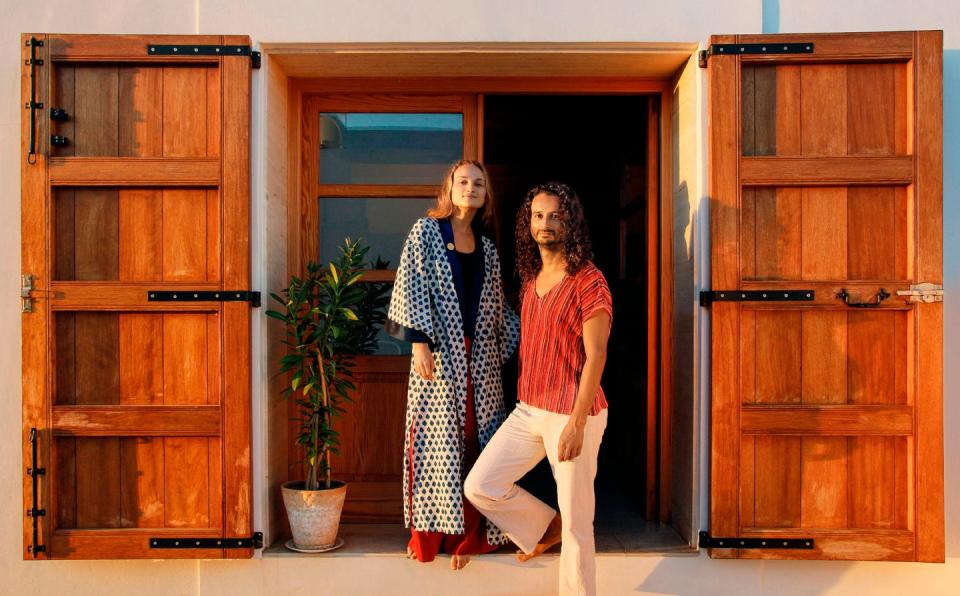
Over the past century, Mallorca has been the most heavily touristed and developed of the islands. Because of its size (a bit larger than Rhode Island) and well-connected airport (there are direct flights between Palma and Newark, New Jersey), it’s also the one with the largest year-round population. Despite the cheap high-rise resorts and bachelor-party vibes in places like Magaluf and Calas de Mallorca, the rest of the island is actually quite wild and dotted with hidden coves and historic stone finca (farm) estates.
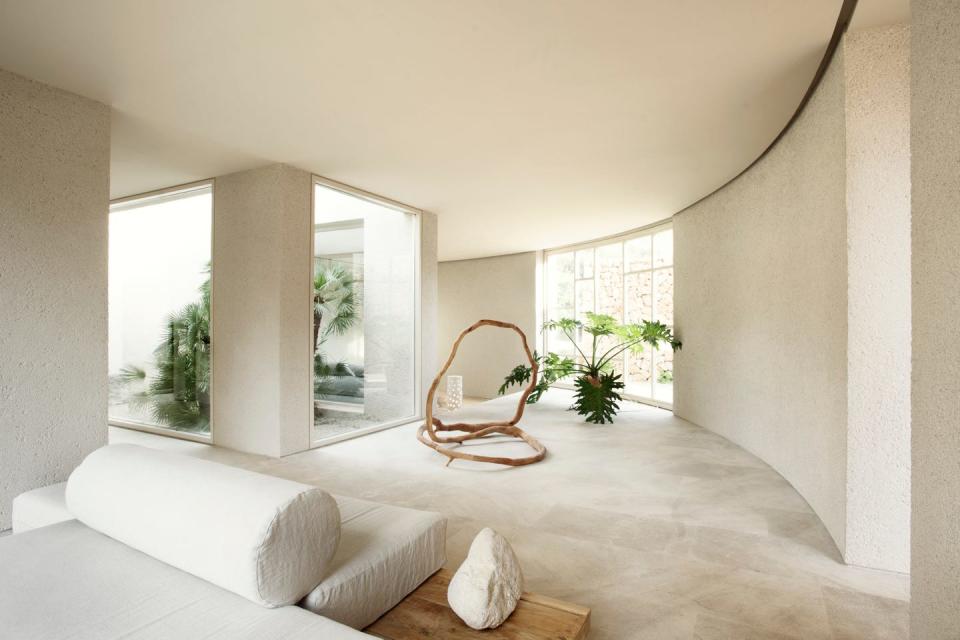
As little as 20 years ago, Palma, one of the most beautifully preserved Gothic cities in Europe, was just being discovered by travelers, who traditionally headed straight for the beach. Then a bit gritty, the city was (and is) an enchanting labyrinth of narrow streets opening onto leafy stone courtyards or views of the sea. Crowned by the extravagant and towering La Seu cathedral, it’s now a sparkling, dynamic Mediterranean capital. From the charming perfume shop Arquinesia, to a clothing line handmade from vintage fabrics and Mallorcan linen called J. Llambias, to outstanding little eateries like Bar La Sang, Palma’s commercial landscape is still one that embraces individual shops over chains. This month, Mallorquín designer Rosa Esteva is opening an extraordinary 7,500-square-foot flagship in Palma for her Barcelona-based fashion brand Cortana, with a collection of sophisticated women’s staples made of luxurious natural fabrics. “Palma is on fire,” Esteva enthuses. “There is so much going on. We used to have to fly to Barcelona to feel connected and inspired. Now I think Palma is more interesting.”
Esteva found the site for Cortana’s new home in a former decor store in a centuries-old building that had been abandoned for years. “You enter through a romantic garden exploding with bougainvillea,” she describes, “and then wander through a maze of about 10 different spaces, with all the walls uneven, and each space is a different mood and mixes clothing with craft objects.” She also launched a home-wares collection of both collaborative projects with local artisans—woven-palm objects by Marga Platel, handblown glass vases from the Gordiola glass factory, and ceramics from Anastasia Egorova—and tablecloths and aprons made from hemp and linen grown on fields in the northeast of the island.
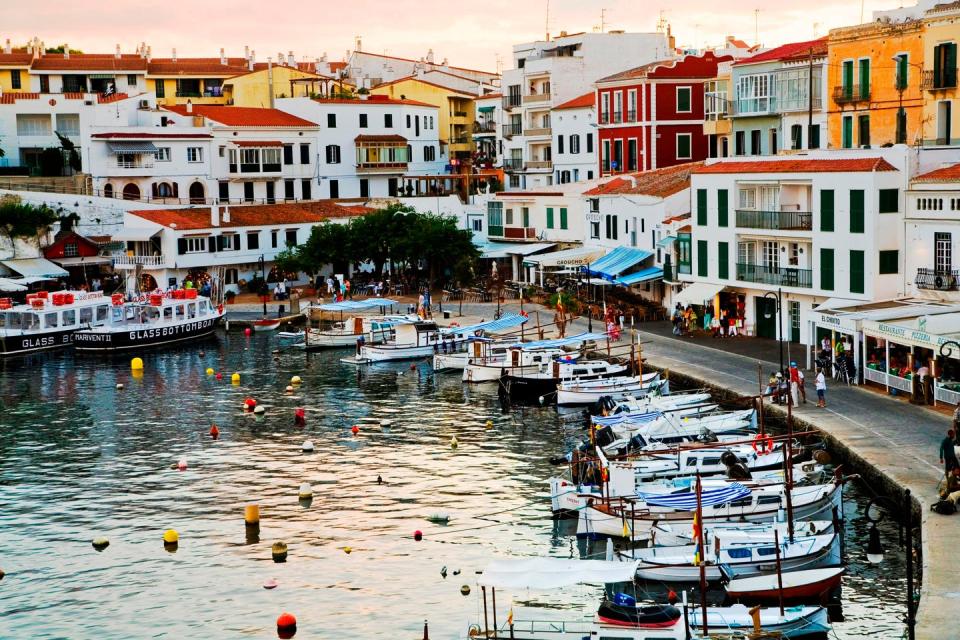
The act of building a small universe of art, design, and gardens is not new for Esteva, whose family has always created its own special environments. Her father, Antoni Esteva, is one of the most talented and influential architects on the island. He’s responsible for the dramatic home and atelier of the Mallorquín artist Miquel Barceló and the original blueprint for the Potter’s House in the isle’s northeast. The latter was the base for the celebrated ceramicist Maria Antònia Carrió and is now a sort of craft think tank spearheaded by the Italian garden designer Luciano Giubbilei. (Antoni Esteva conceptualized the new Cortana store with Rosa’s brother, Tomeu.)
The Estevas also own and oversee Son Gener, the cultish boutique resort in Son Servera, popular with art-world luminaries, as well as (with builder Jaume Danus) the recently opened Es Racó d’Artà, a finca about an hour east of Palma dating back to the 13th century, which is surrounded by 450 acres of vineyards, olive trees, and farmland and has been transformed into one of Europe’s chicest wellness resorts. The spaces of the main building, plus 34 rooms scattered throughout, some in stand-alone cottages, are defined by Antoni Esteva’s signature Mallorcan version of wabi sabi, a subtle but curated mix of textured organic surfaces. It’s in the fields of Es Racó that Rosa Esteva has planted the linen and hemp that she’ll utilize to create her textiles. “This is how it used to be in the past,” she says. “Every large estate used to have looms with which one wove all the fabrics one needed, from bedsheets to curtains. I feel it’s the right time to go back to that idea. During Covid, when everything shut down and we were closed off from the world, it was clear that Mallorca should learn how to be self-sufficient again.”
Esteva is not alone in her embrace of Indigenous materials and makers; there is currently a powerful collective movement on the island to develop its local resources—sheep, linen, palms—to support a rich and growing innovative craft scene, which is being supported by a new kind of slow tourism that celebrates the handmade and the local. “The whole island is pulsing with creativity and moving in an exciting new direction,” says Urs Leuenberger, the founder and designer (with Romana Durisch) of Arquinesia, a boutique perfumery that is hidden in a townhouse in Palma’s Old Town. Many artisans and artists are now able to make a living selling their work to a global audience on platforms like Instagram without leaving the island. That is certainly true for textile artist Adriana Meunié, who lives with her partner, fellow artist Jaume Roig, on a small farm surrounded by the landscape that inspires her richly textured work: large-scale wall hangings of woven raw Mallorcan materials like wool, raffia, and esparto grass.
This back-to-the-roots movement extends to the island’s culinary scene. Chef-entrepreneur María Solivellas’s family restaurant, Ca na Toneta, which she runs with her sister, Teresa, is set in an old stone house in the small village of Caimari. The eatery is emblematic of the zero-kilometer cuisine and foraging that is now standard here. She also helped start a small revolution of natural winemaking on Mallorca. Not surprisingly, Rosa Esteva chose to consult Solivellas on her new store’s café.
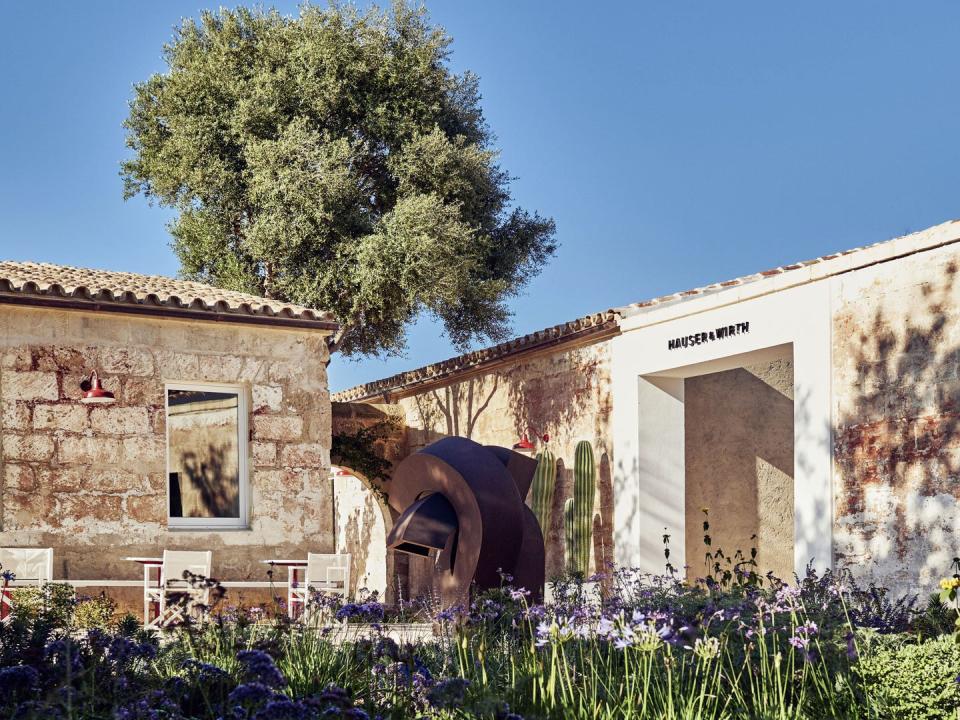
Hauser & Wirth cofounders Iwan and Manuela Wirth (née Hauser) had been asked numerous times to replicate their pioneering Somerset gallery and arts center, which is set on a farm estate in the English countryside, at various sites around the globe. But it was only when they were approached by the foundation that oversees Menorca’s Isla del Rey, a tiny dot of land in the charming Mahón harbor on which the British had built a naval hospital in the 18th century, that they said they would do it. The island’s idyllic beaches and medieval towns—the entirety of it is a UNESCO Biosphere Reserve—have been slowly attracting a sophisticated international art-world crowd for the past few years. At the time they were approached, the couple had been renting a house there for two summers. The Wirths knew it would not be an easy project, as Menorca enforces strong building restrictions and environmental protections. But the chance to revive and reinvent Isla del Rey with dynamic contemporary cultural programming was too compelling to refuse.
After four years of careful renovation work, the new Hauser & Wirth outpost, accessible by a 15-minute boat ride, opened last summer with a monumental Mark Bradford exhibition. The center features an exhibition space with eight galleries, an outdoor sculpture trail, an education lab, a shop promoting local artisans like ceramicist Blanca Madruga, and a restaurant. (This summer, it will be hosting a major solo exhibition by another American artist, Rashid Johnson.) Some people say Menorca’s landscape has remained so untamed because it was one of the last corners of Spain to surrender in the 1930s to General Francisco Franco, who punished the island by depriving it of public-building funds. Its proud residents continue to protect their territory. The isle’s most passionate and green hoteliers—such as the Paris-based Experimental Group, which took over a 75-acre finca in 2019, and the small French chain Les Domaines de Fontenille—have invested in the historic fincas on the island. Regulations require owners to maintain the surrounding land as carefully as the architecture, which is why all the best properties, such as Fontenille’s Santa Ponsa, are working farms.
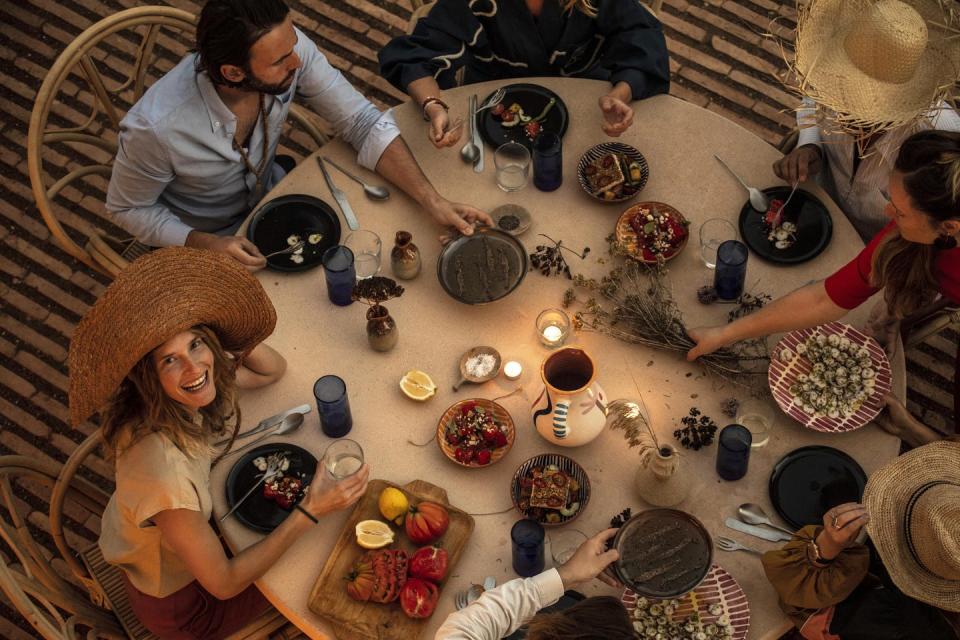
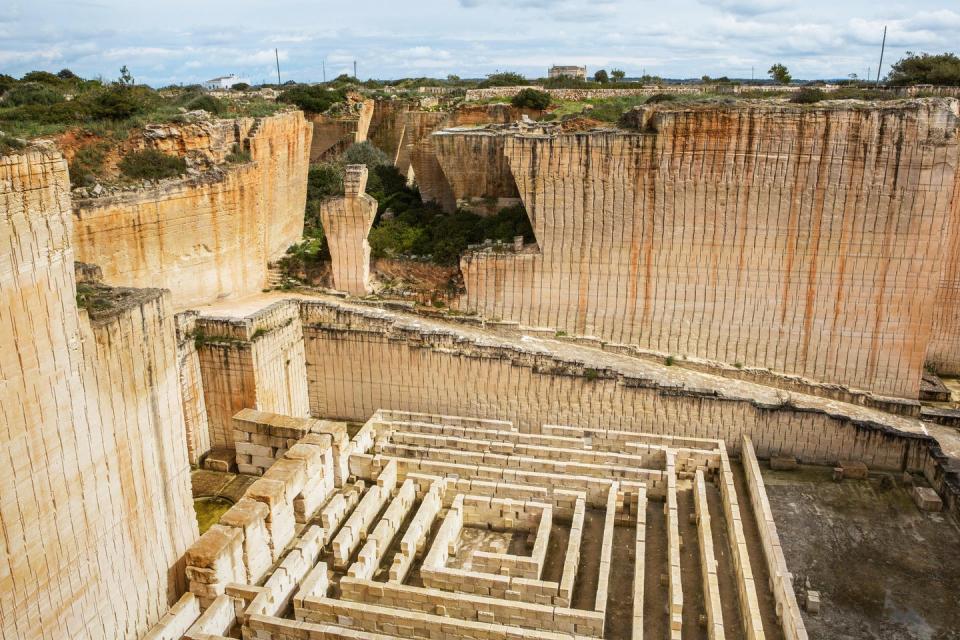
Even the island’s former quarries are protected and treated as treasured landscapes rather than deserted wounds. The sculptor Laetitia Lara spent decades transforming an area of quarries just outside of Ciutadella into a dramatic and magical space of cut stone, mazes, and secret gardens called Líthica. The nonprofit foundation she started now organizes tours and hosts cultural events and performances in the summer months.
One of the most talked-about architectural firms in Europe right now is the Madrid- and Boston-based Ensamble Studio, founded by Antón García-Abril and Débora Mesa, thanks to the completion of their subterranean “house of the earth,” Ca’n Terra, a sort of domestication of an old sandstone quarry. For the pair, the project was about inventing a new architecture and redefining the concept of beauty. “It can take just a light and soft touch to transform what was an old abandoned mine into a wonderfully evocative space,” says García-Abril, who is also a professor at MIT. “My biggest achievement was to interpret the site, not to intervene.” He adds, “The future of architecture is not about a style or trend, but instead it’s about connecting to the earth. Art and design can deliver a powerful message and transform our world, and in my opinion, Menorca is succeeding at this mission.”
This article originally appeared in the May 2022 issue of Harper's BAZAAR, available on newsstands May 3.
GET THE LATEST ISSUE OF BAZAAR
You Might Also Like

